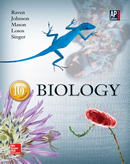1 A) Alpha B) Beta C) Beta prime D) Sigma E) Delta 2 A) TATA box proteins B) Introns C) Exons D) Transcription factors E) Methyl-G cap 3 A) Gene editing B) Alternative splicing C) Exon shuffling D) Intron excision E) Mutation 4 A) Peptidyl transferase activity of the large subunit. B) Proteins in the large and small subunit of the ribosome. C) Ribozyme activity of tRNA. D) The charging effect of aminoacyl tRNA synthetase. E) Condensase activity of the small subunit. 5 A) True B) False 6 A) All organisms use DNA to store their information. B) The genetic code is semi-conservative. C) The code is universal. Genes can be transferred from one organism to another and can be successfully expressed in their new host D) DNA encodes information for RNA, which directs protein synthesis. E) The genetic code is degenerate but specific. 7 A) promoter. B) initiator. C) transcription factor. D) start codon. E) ribosome. 8 A) Nucleotides in the promoter are different in prokaryotes and eukaryotes. B) Genes are more widely-spaced apart in eukaryotes than prokaryotes. C) Prokaryotic ribosomes look different than eukaryotic ones. D) Prokaryotic ribosomes translate mRNA transcripts that are still being synthesized by RNA polymerase. E) Prokaryotic mRNA does not contain introns. 9 A) Excised exons. B) Introns to be excised later. C) Exons in the pre-mRNA. D) Exons that are in the process of being fused together. E) Regions of the poly-A tail in the pre-mRNA. 10 A) True B) False 11 A) the redundancy of the genetic code. B) conservation of the genetic message. C) the large variety of amino acids encoded by the genetic code. D) the excess of different kinds of tRNA that are required for all the amino acids. E) connection of an amino group to a carboxyl group during peptide bond formation. 12 A) confusion of which amino acids go where in the polypeptide chain. B) expansions of the ends of chromosomes due to repeated nucleotides. C) inappropriate termination of translation early in the "reading frame". D) duplication of a region of a chromosome. E) a mistake that causes a portion of a chromosome to "flip" in orientation. 13 A) DNA. B) an anticodon. C) complement. D) a peptide. E) a start codon. 14 A) DNA B) mRNA C) rRNA D) protein E) tRNA 15 A) P site B) A site C) E site D) F site E) 1, 2, and 3 are all ribosomal binding sites





